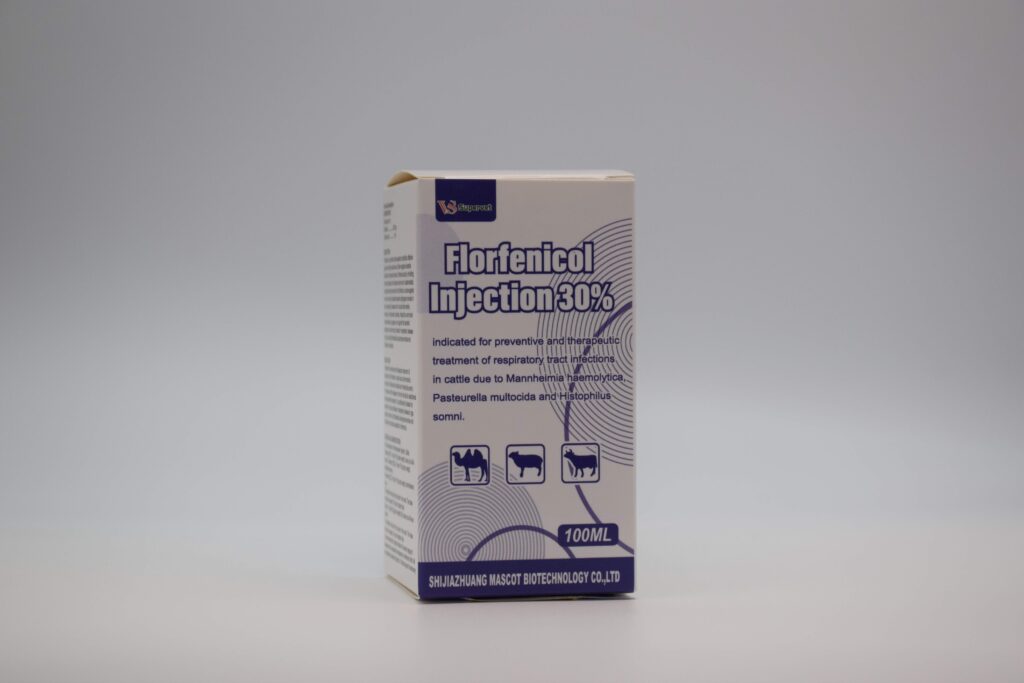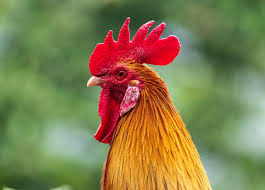
Florfenicol
Brand Name:
Florfenicol
Indications & Uses:
Bacterial infections, Septicemia
Dosage Forms:
Water Soluble Powder, Liquid Solution, Injection Solution, Drops
Name:
Florfenicol
Common Capacity:
- Injection Solution:
- 5%; 10%; 15%; 20%; 30% concentration in 50ml; 100ml per bottle .
- 10%; 25% concentration in 500ml; 1000ml per bottle .
- Oral Solution: 10%; 20% concentration in 500ml; 1000ml per bottle .
- Drops (Ear Drops):
Applicable Animals:
Global Livestock Application:
- Pigs: Piglets, growing pigs, breeding sows, boars (respiratory diseases, systemic infections, digestive tract infections).
- Poultry: Chickens, ducks, turkeys (respiratory diseases, colibacillosis, salmonellosis).
- Cattle: Calves, adult cattle (Bovine Respiratory Disease (BRD), infectious bovine keratoconjunctivitis, foot rot).
- Sheep & Goats: Lambs, adult sheep/goats (respiratory infections, foot rot).
- Aquatic Animals: Fish, shrimp (bacterial septicemia, enteritis caused by susceptible bacteria).
- Special Farming: Rabbits, mink, foxes (bacterial infections).
- Pets: Dogs, cats (certain bacterial infections, including ear infections 9).
Usage and Dosage:
Dosages for Florfenicol vary significantly based on the animal species, the type and severity of infection, and the specific formulation (e.g., injectable, oral solution, water-soluble powder, or drops). Always consult a veterinarian for precise dosage recommendations.
General Guidelines:
- For Injection Solutions (Intramuscular/Subcutaneous):
- Cattle: Typically 20 mg/kg body weight, administered twice with a 48-hour interval, or 40 mg/kg body weight once subcutaneously.
- Pigs: Typically 15 mg/kg body weight, administered once daily for 3 days, intramuscularly.
- Poultry: 20 mg/kg body weight, administered subcutaneously.
- Duration of treatment typically 3-5 days.
- For Oral Solutions/Water Soluble Powder (via drinking water or feed):
- Pigs: 10-20 mg/kg body weight per day, for 3-5 days. Administered through drinking water or mixed in feed.
- Poultry: 10-30 mg/kg body weight per day, for 3-5 days. Administered through drinking water.
- Aquatic Animals: Dosages vary greatly depending on species and disease. Typically 10-15 mg/kg body weight for 5-7 days, mixed in feed.
- For Drops (e.g., Ear Drops):
- Pets: As per product specific instructions, typically a few drops applied into the affected ear(s) once or twice daily for a specified duration 9.
- Growth Stages (Example for common species):
- Young/Growing Animals: Often require precise dosing based on body weight.
- Adult Animals: Standard therapeutic doses applied.
- Breeding Animals: Use with caution, especially during pregnancy/lactation, as Florfenicol can cross the placental barrier and be excreted in milk.
Applicable Diseases and Symptoms:
Florfenicol is a broad-spectrum antibiotic effective against many Gram-positive and Gram-negative bacteria, including those resistant to amoxicillin or tetracyclines. It’s particularly effective against certain respiratory and enteric pathogens. It is used for:
- Respiratory Diseases:
- Bovine Respiratory Disease (BRD) caused by Pasteurella multocida, Mannheimia haemolytica, Histophilus somni.
- Swine respiratory diseases (e.g., pleuropneumonia, swine enzootic pneumonia) caused by Actinobacillus pleuropneumoniae, Pasteurella multocida, Mycoplasma hyopneumoniae.
- Fowl cholera and other respiratory infections in poultry.
- Gastrointestinal Infections:
- Bacterial enteritis and diarrhea caused by E. coli, Salmonella spp.
- Systemic Bacterial Infections:
- Septicemia, especially when caused by susceptible Gram-negative bacteria.
- Foot Rot: In cattle and sheep caused by Fusobacterium necrophorum and Bacteroides melaninogenicus.
- Other bacterial diseases:
- Such as infectious bovine keratoconjunctivitis, and other bacterial infections susceptible to florfenicol.
- Ear infections in pets: Specifically, products like “Flofenicol Metronidazole Ear Drops” indicate its use for pet ear conditions 9.
Precautions:
- Resistance: Use judiciously to minimize the development of antibiotic resistance.
- Route of Administration: Follow recommended routes; subcutaneous injection is preferred in cattle to reduce irritation at injection site.
- Dosage Accuracy: Accurate dosing is critical to efficacy and safety.
- Anorexia and Diarrhea: Transient anorexia, decreased water intake, or mild diarrhea may occur, especially in pigs.
- Injection Site Reactions: Swelling and inflammation at the injection site may occur but usually resolve within a few days.
- Drug Interactions: Avoid co-administration with chloramphenicol or thiamphenicol due to potential adverse effects and antagonism.
- Withdrawal Period: Strict adherence to withdrawal periods for meat and milk is crucial to prevent drug residues in human food. Withdrawal periods differ significantly based on species, dose, and administration route. Always verify specific product labels.
- Storage: Store in a cool, dark place, protected from light. Keep out of reach of children.
- Human Safety: Avoid accidental self-injection or direct contact. Persons with known hypersensitivity to phenicols should avoid handling the product.
Contraindications:
- Hypersensitivity: Do not use in animals with a known hypersensitivity to florfenicol or other phenicols.
- Breeding Animals: Not recommended for use in breeding boars or breeding sows due to potential effects on reproductive performance.
- Lactating Dairy Animals: Not recommended for use in lactating dairy animals producing milk for human consumption due to residue concerns in milk.
- Laying Hens: Not recommended for use in laying hens producing eggs for human consumption.
- Young Animals (Specific): In some species or formulations, caution or contraindication may apply to very young animals, depending on specific product guidelines.
Post-Treatment Care:
- Monitor Clinical Response: Continuously observe treated animals for signs of clinical improvement or any adverse reactions. If the condition worsens or no improvement is seen, consult a veterinarian and reassess the diagnosis and treatment plan.
- Complete Course: Ensure that the full prescribed course of treatment is completed to prevent relapse and minimize the development of antibiotic resistance.
- Supportive Care: Provide appropriate supportive care, including sufficient access to fresh water and palatable feed, and maintaining a clean and comfortable environment.
- Biosecurity and Management: Implement or reinforce biosecurity measures and good management practices to prevent re-infection and control disease spread.
- Withdrawal Period Compliance: Strictly adhere to the established withdrawal periods before the animal’s products (meat, milk) are used for human consumption.
- Record Keeping: Maintain accurate records of all treatments, including drug name, dosage, date, route of administration, and animal identification.
Applicable Animals
Animal species suitable for this veterinary medication




